The term ‘savage’ has a dark and loaded past in the context of art history, but through contemporary culture, brands like Rihanna’s Savage X Fenty have hijacked it from its historical captors. As new life is breathed into the post-pandemic South African art scene, Bubblegum Club sits down with Lwando Dlamini to discuss his career, success, and take on the tainted term.
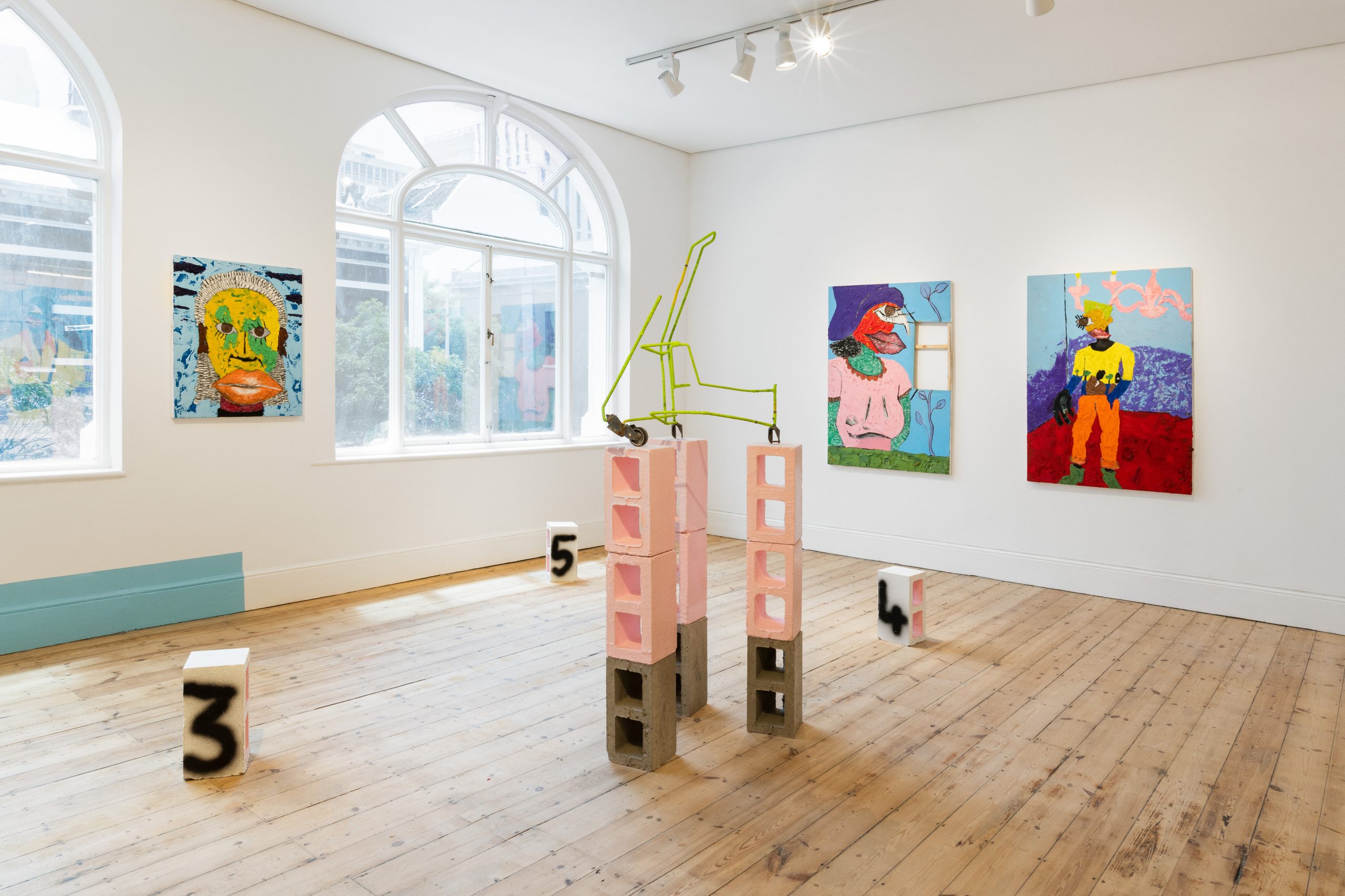
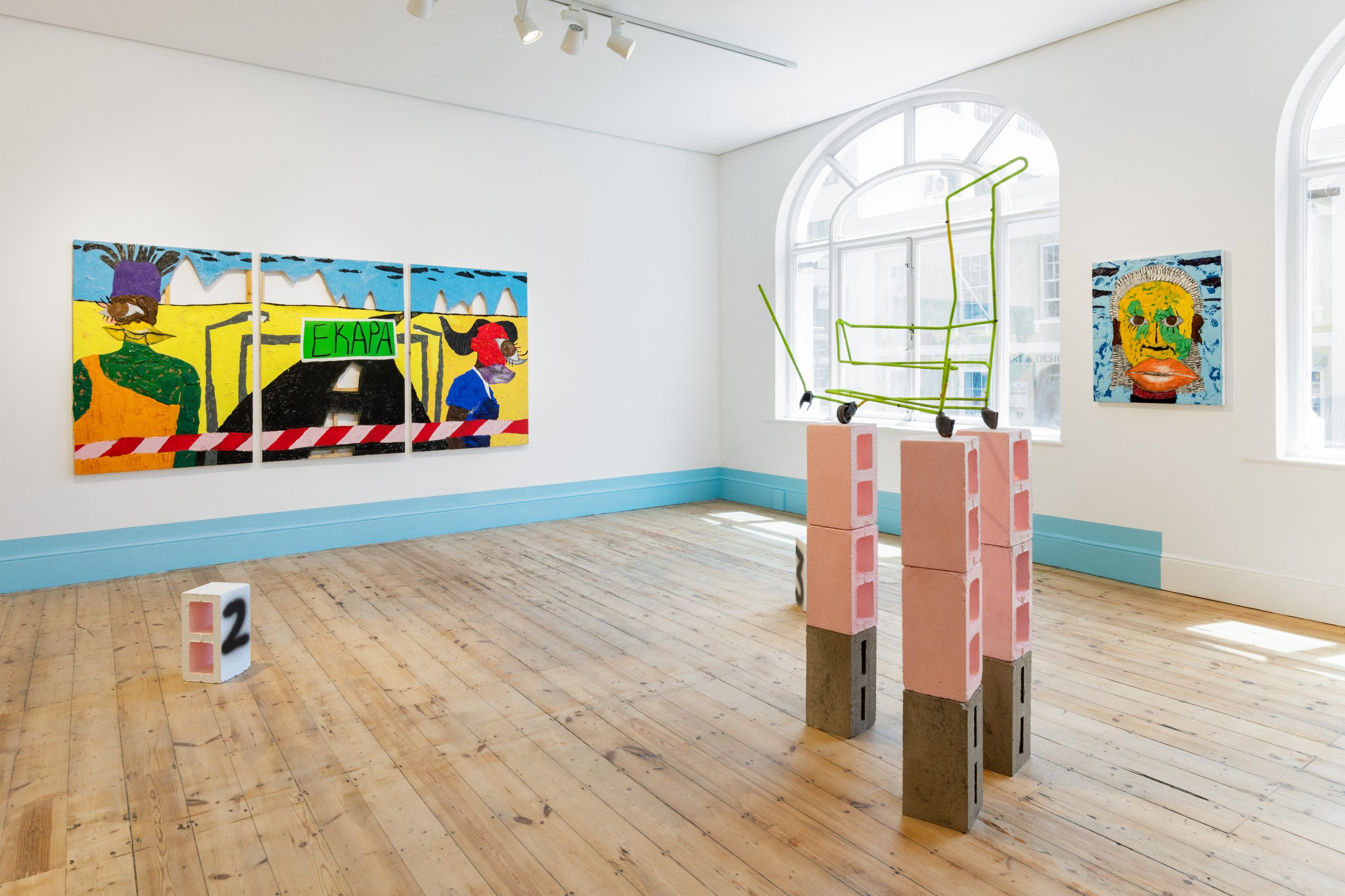
Images courtesy of Ebony/Curated
Bright Beginnings
Lwando Dlamini is a South African painter who has been practising since 2015. He was born on 20 August 1992 eNgcobo in the Eastern Cape. Dlamini was an active child who engaged in extracurricular activities such as magic school and karate.
By high school, Dlamini had received a bursary to study art at the Frank Joubert Art Centre, where he began as a design student and soon switched to the fine art department. Like many black art students, Dlamini encountered racism at the Art Centre, finding solace in his friendships with fellow black students like Simphiwe Ndzube, another painter who has enjoyed meteoric success in the contemporary art world.
Dlamini faced resistance from some family members when he pursued art as a career. To appease them, he initially applied to study law in the Eastern Cape but eventually worked odd jobs while compiling his portfolio and applying to art schools. He was rejected by the Michaelis School of Fine Art but accepted by the architecture department at Cape Town University of Technology. This led him to be discovered by the Ruth Prowse School of Art, where he enrolled and eventually graduated with a Diploma in Fine Art.
At Ruth Prowse, Dlamini learned that drawing was the foundation of painting and fell in love with oil pigment. He was influenced by hyperrealist artists like Ron Mueck and Chuck Close. He was supported by various local artists, including Ndikhumbule Ngqinambi and Simphiwe Ndzube. The painter draws inspiration from other South African artists such as Igshaan Adams, Nicholas Hlobo, Kemang Wa Lehulere, Yolanda Mazwana, and Lulama Wolf.
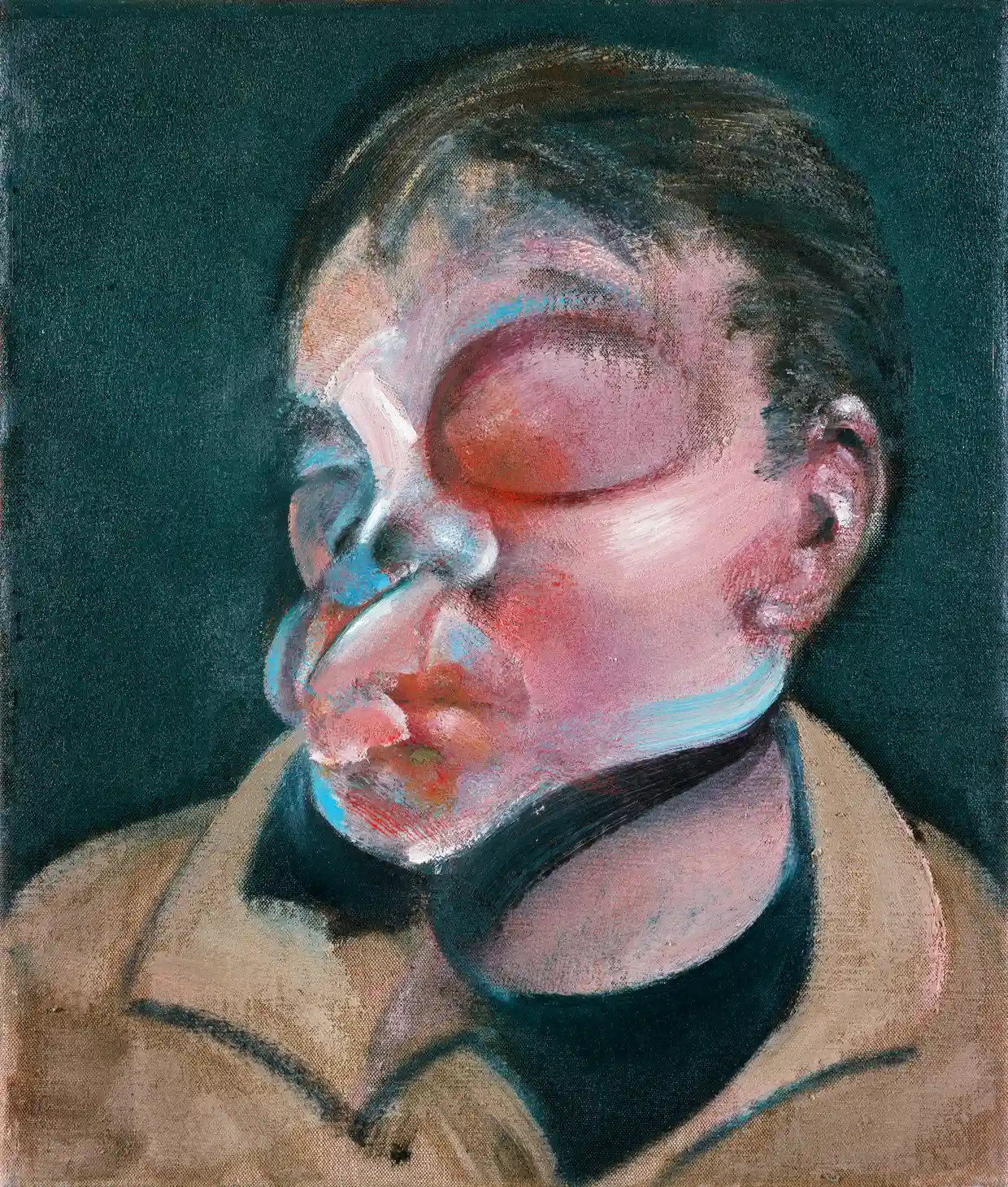
Francis Bacon | Self-Portrait with Injured Eye (1972) | Oil on canvas | 35.5 x 30.5 cm | Image courtesy of The Estate of Francis Bacon
Crude Comparisons
In 2012, Dlamini was brutally attacked and left for dead by a corrupt police officer. As a result of his injuries, Dlamini lost sight in his left eye. Though this horrific event caused permanent damage and delayed him academically, it amplified his passion for art. Since then the artist has channelled his pain, anger, and will to live into his work.
The tradition of allowing awful incidents to inspire iconic images is not uncommon in the history of art and this artist is well aware of that. To appreciate Dlamini’s work is to be familiar with this tradition, which can be seen vividly in the work of the British painter Francis Bacon (1909 – 1992). Now, some art world aficionados will find this comparison quite crude, but the crudeness here is perfectly pertinent.
Bacon’s paintings often featured the human form but were not necessarily naturalistic or idealized. Indeed it was violence and pain that seemed to seep through the fabric of Bacon’s canvasses. Bacon’s frames frequently featured psychological angst, reflected the bleakness of the human condition, and even portrayed real-life instances of physical abuse. One of Bacon’s paintings, Self-Portrait with Injured Eye (1972) was inspired by a violent lover’s quarrel resulting in the famous painter losing sight in his left eye.
Dlamini’s work similarly explores the fragility of the human body, often incorporating themes of violence and memory. Like Bacon, Dlamini portrays distorted human forms on his surfaces. Both artists’ preoccupation with distorted and abstracted eyes reflects personal experiences with the violent loss of sight.
Rather than shy away from these seemingly grandiose comparisons, Dlamini glares directly into the channels of art history. Reminiscent in its title of Jan Vermeer’s Girl with A Pearl Earring (1665), Dlamini’s Man with Gold Earring (2022) could be regarded as a contemporary homage. While the colour palette is more plasticized and contemporaneous, the composition of Dlamini’s Man with Gold Earring is true to the 17th-century Dutch classic.
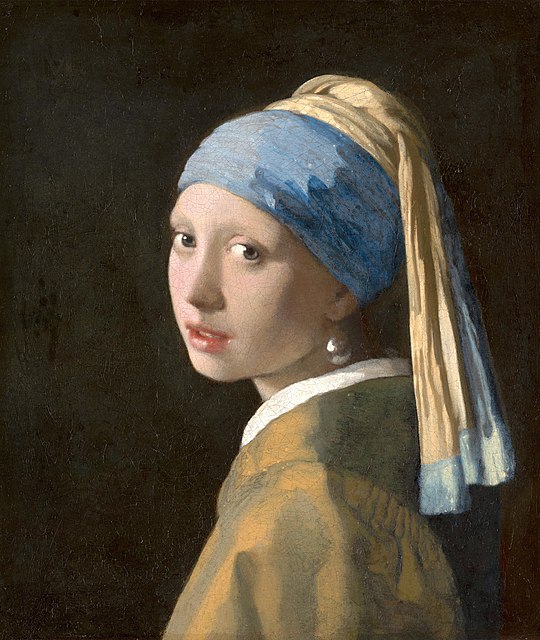
Johannes Vermeer | Girl with a Pearl Earring (1665) | Oil on canvas | 44.5 cm × 39 cm | Image courtesy of Mauritshuis
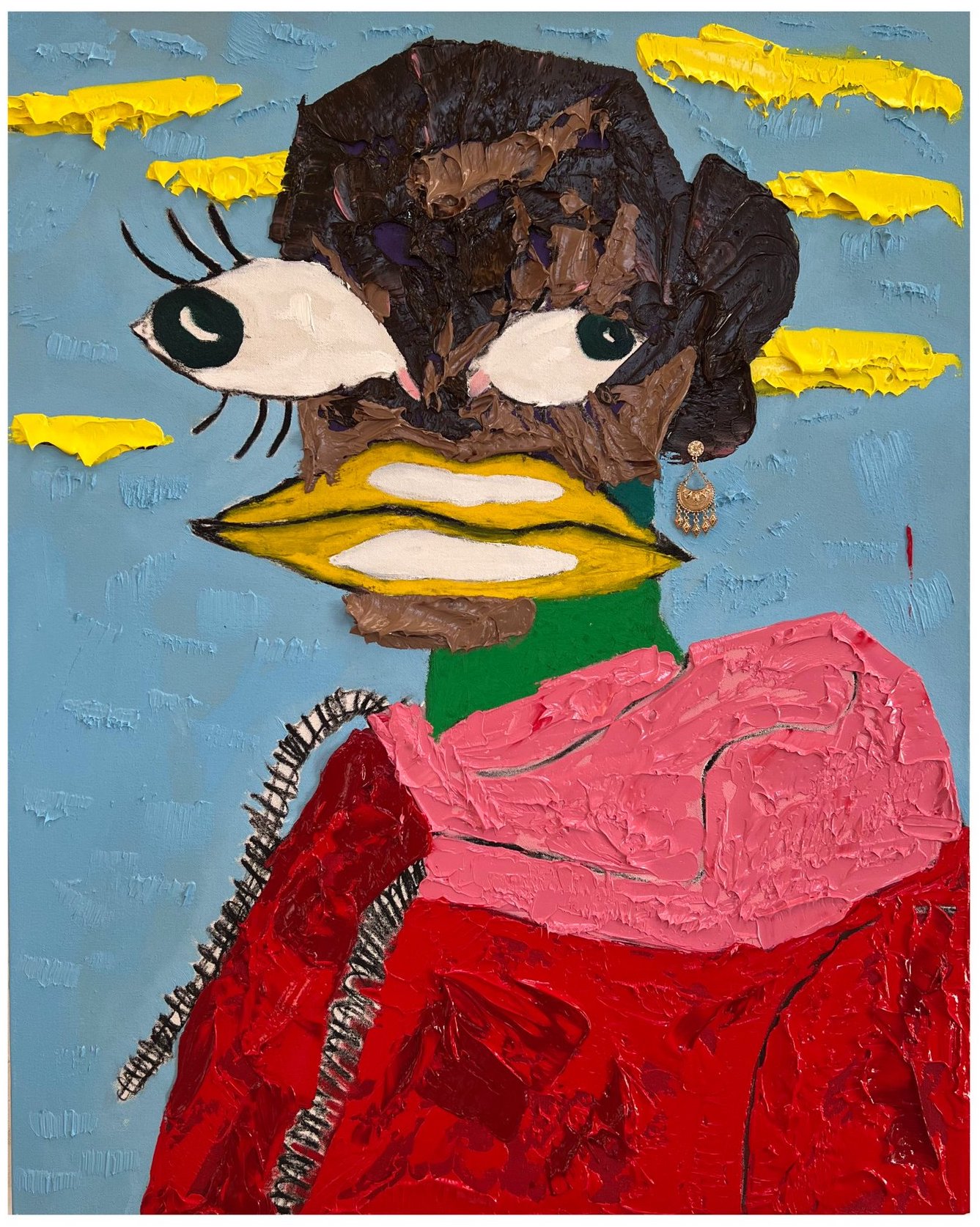 Lwando Dlamini | Man with Gold Earring (2021-2022) | Oil, charcoal, oil sticks, and gold earring on canvas | 90x 72cm | Image courtesy of Ebony/Curated
Lwando Dlamini | Man with Gold Earring (2021-2022) | Oil, charcoal, oil sticks, and gold earring on canvas | 90x 72cm | Image courtesy of Ebony/Curated
Though it reaches into the past, the painting reverberates with the rhythm of the now. It has a simple, yet vibrant colour palette applied in thick layers of oil paint. The figure wears a pink and red hoodie, set in front of a light blue background with bright yellow clouds, and a small golden earring is glued onto the canvas. The dark-skinned figure has a green neck, disproportionally large yellow lips, and eyes with pupils floating in opposite directions, with the left eye being significantly larger than the right.
The paintings ‘Self Portrait II’ (2020), Xhosa Man (2021-2022), Faith (2021-2022), These Are the Champions (2021-2022), and Ntokozo Mkhize (2021-2022) are further evidence of Dlamini’s preoccupation with the eye. Though these are figurative images, they are abstracted through thick layers of paint and bright, garish colour palettes. In his depiction of the road in Faith Dlamini cut into his canvas, exposing the wooden frame behind the painting’s facade.
While he has a keen awareness of artistic traditions, Dlamini rejects creative limits in his studio practice and has an intriguing level of detachment from his work – cutting, stitching, and destroying the canvas at will. He prefers not to overthink his artistic process and paints intuitively. He does not believe in spoon-feeding an audience and enjoys allowing viewers to uncover meaning themselves.
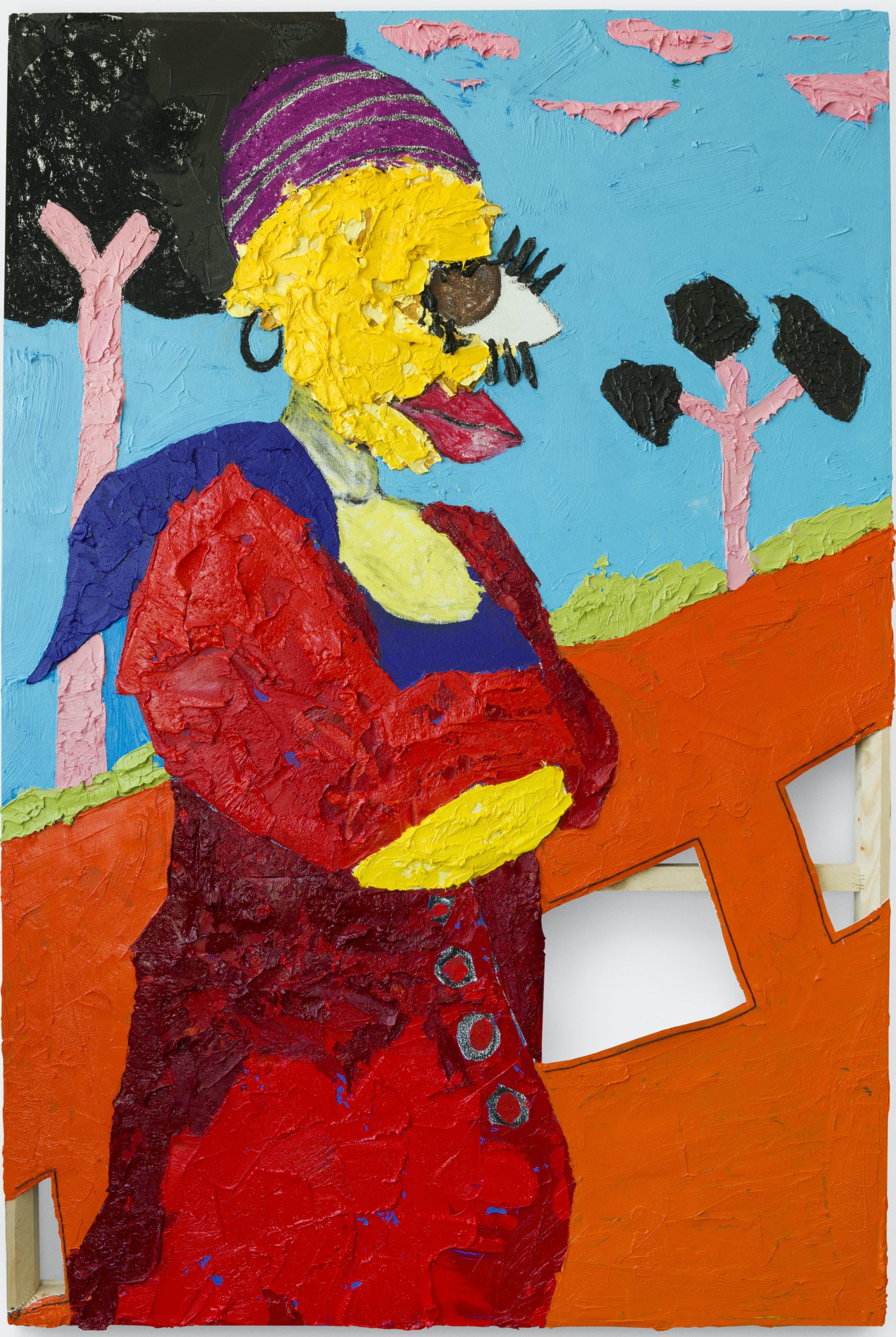
Lwando Dlamini | Faith (2021-2022) | Oil, charcoal, thread and oil pastel on canvas | 150cm x 100cm | Image courtesy of Ebony/Curated
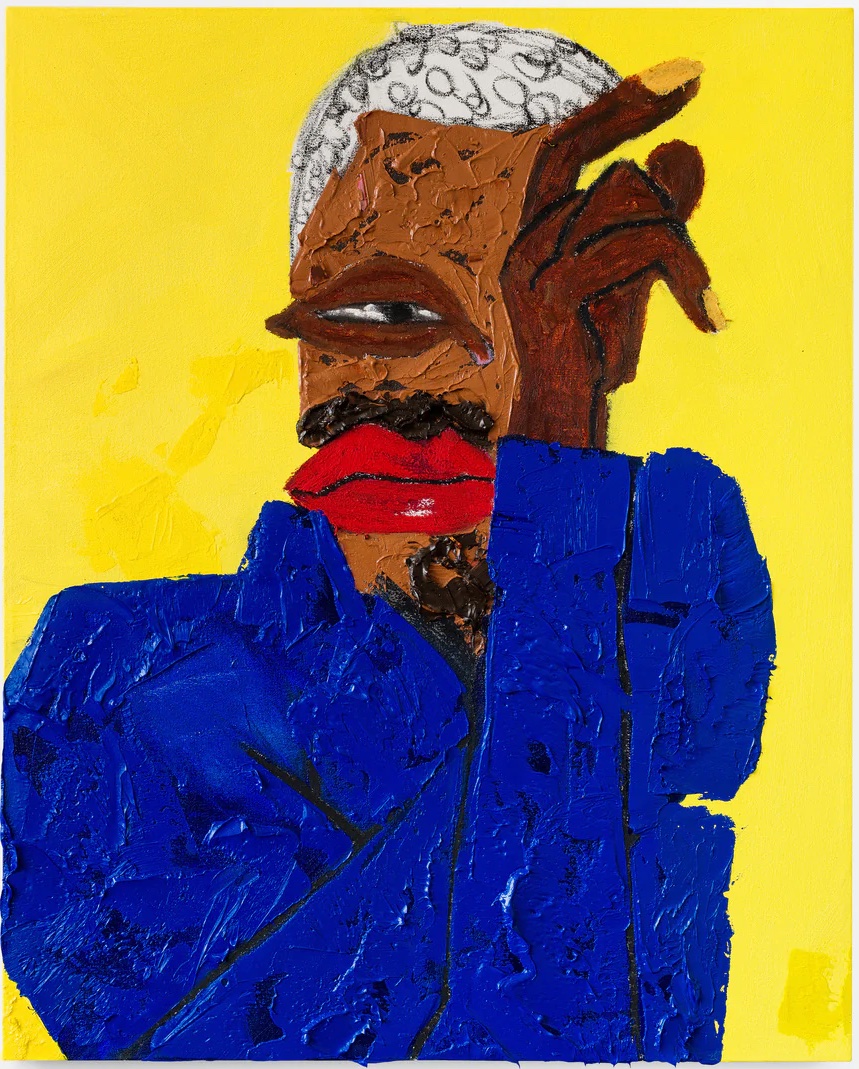
Lwando Dlamini | You Want To Bamba?? You Want To Chill With The Big Boyz?? Now You Dey Run Kitikiti You Dey Run Katakata No Fit Drink Water Drop Cup! (2021-2022) | Oil, Charcoal and Oil Sticks on Canvas | 90 x 72 cm | Image courtesy of Ebony/Curated
Seeing Success
Though Dlamini is a relatively new painter and a recent graduate, he has quickly amassed an impressive resume of exhibitions and awards. Like most young popular contemporary South African artists, social media has played a large part in his success. Most of his business deals are conducted online.
Dlamini was an ABSA L’atelier Art competition semi-finalist in 2018. That same year he won the Bag Factory Artist Studios’ David Koloane Award, attended the Artist Career Boot Camp, and exhibited at the FNB Joburg Art Fair where he sold out on opening night.
Dlamini was one of the artists selected for the RMB Talent Unlocked program at the 2019 Turbine Art Fair. In 2020, he showed his work at the Cape Town Art Fair for the first time. On the 22nd of July 2020, he presented his debut solo exhibition at Ebony/Curated on 67 Loop Street in Cape Town. The exhibition, which was titled Triumph ran until the end of August 2020.

Image courtesy of Ebony/Curated
Although it was at the height of the COVID-19 pandemic, the exhibition sold out. Ebony/Curated went on to host Dlamini’s second exhibition Learning How To Be [Less Afraid] Brave in 2022. Dlamini became the 2022 recipient of the Thami Myele August House Emerging Residency Artist Award. The award came with a residency at August House and a sum of R10 000.
As a young black artist from a financially disadvantaged background, Dlamini recognizes the issue of access within the art establishment. He is deeply concerned about the challenges faced by young black artists and aims to expand the Lwando Dlamini Art Prize, which raises money to support black art students from similar situations.
For Dlamini, the artistic process is a constant search for self. He believes that changing his environment allows him to challenge and tap into new parts of his artistic self. In his quest to further explore the limits of painting, Dlamini continues looking for growth opportunities and plans to move abroad following his upcoming solo exhibition at a prestigious New York gallery he prefers not to mention just yet.
Bubblegum Club looks forward to being privy to this new shift, which promises a powerful progression of these perversely blissful representations of brutality. With its violent subject matter and luscious form, Dlamini’s paintings symbolize the unbreakable bond between art and life. The artist’s vulnerability floods his canvasses with a bold audacity, resulting in a distinctly South African type of beauty, both savage and sublime.

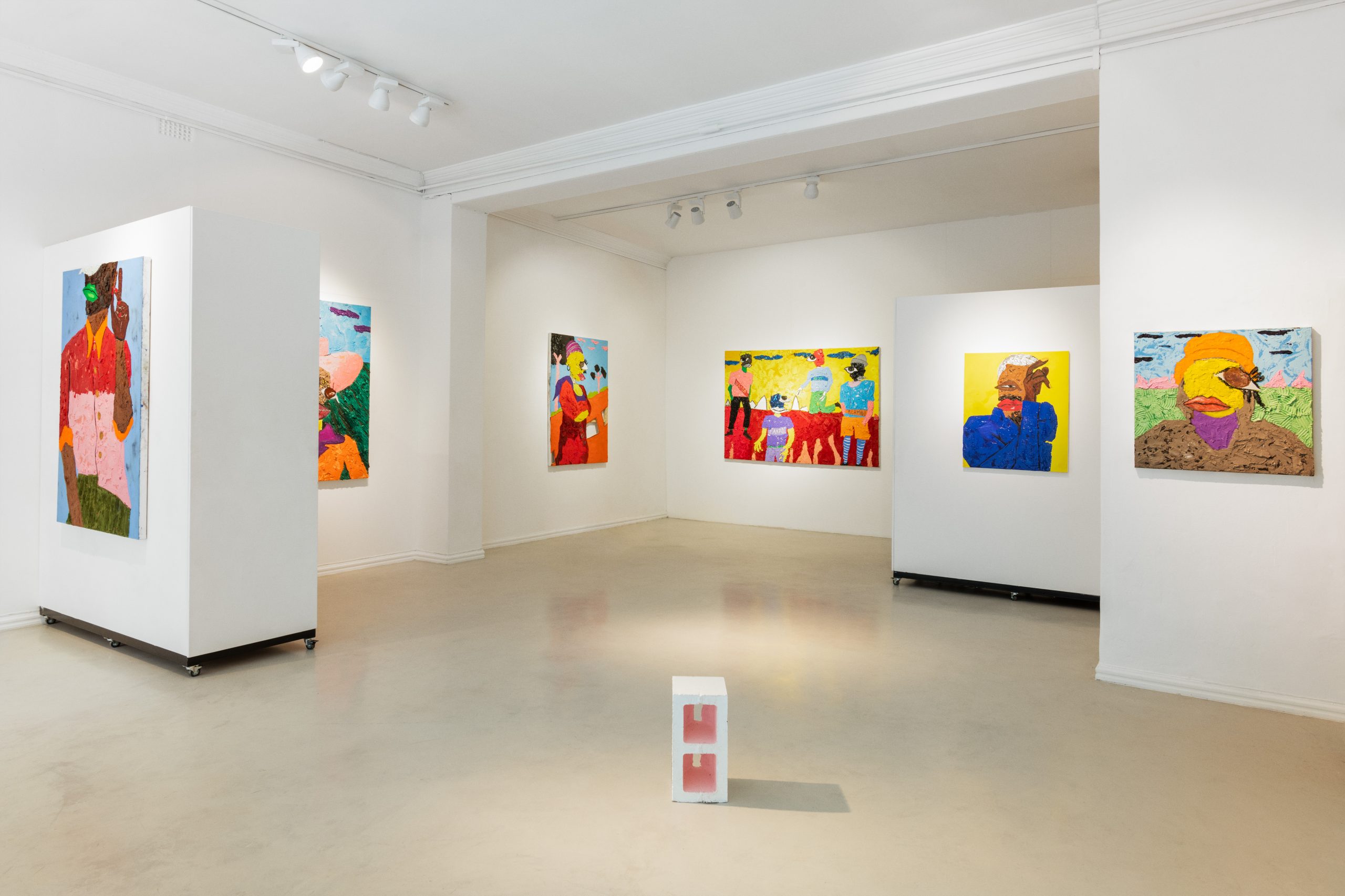
Images courtesy of Ebony/Curated



















































